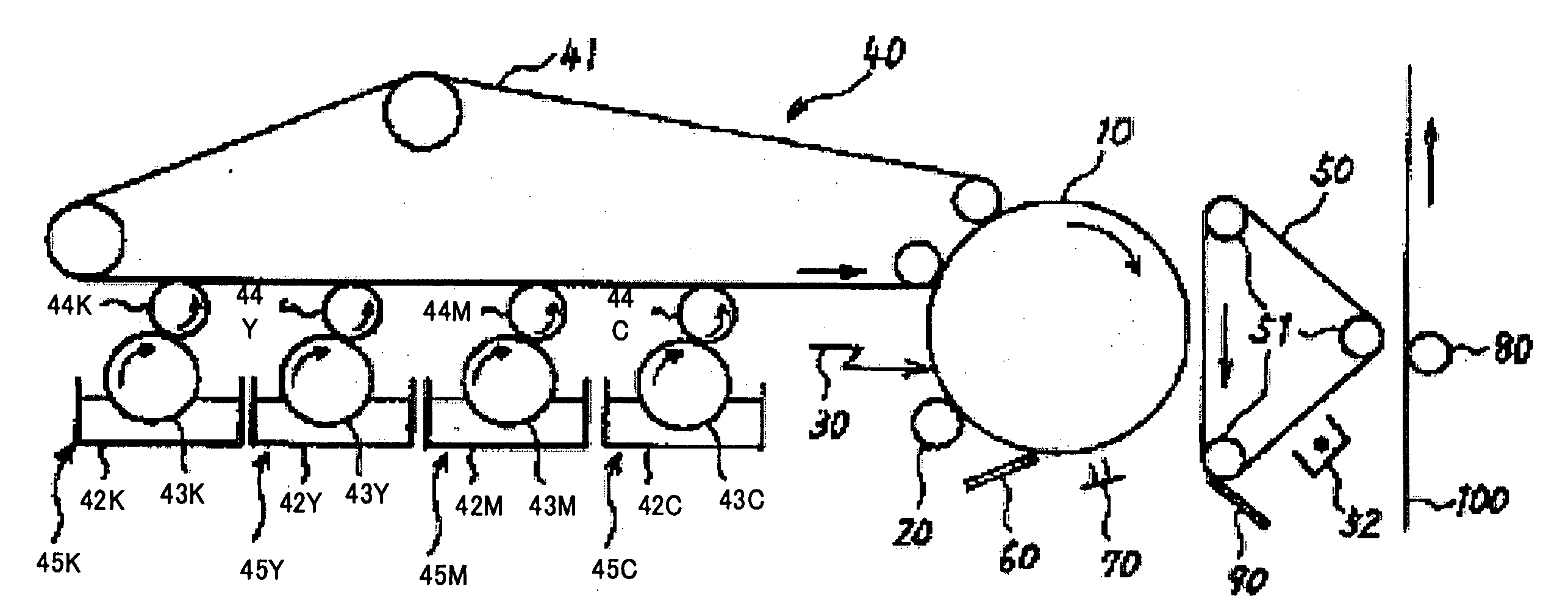Toner for developing electrostatic images, developer, image forming method, and image forming apparatus
a technology toners, applied in the field of toner for developing electrostatic images, image forming methods, image forming apparatus, etc., can solve the problems of limited selection of materials for toners, and insufficient brittleness of fused and mixed compositions, etc., to achieve the effect of reducing the amount of toner, and reducing the cost of toner
- Summary
- Abstract
- Description
- Claims
- Application Information
AI Technical Summary
Benefits of technology
Problems solved by technology
Method used
Image
Examples
example 1
—Synthesis of Organic Fine Particle Emulsion—
production example 1
[0230] To a reaction vessel equipped with a stirrer and a thermometer, 683 parts of water, 11 parts of sodium salt of the sulfuric acid ester of methacrylic acid ethylene oxide adduct (ELEMINOL RS-30, manufactured by Sanyo Chemical Industries, Ltd.), 166 parts of methacrylic acid, 110 parts of butyl acrylate, and 1 part of ammonium persulphate were poured, and stirred at 3,800 rpm for 30 minutes to obtain a white emulsion. The white emulsion was heated, the temperature in the system was raised to 75° C., and the reaction was performed for 4 hours. Next, 30 parts of an aqueous solution of 1% ammonium persulphate was further added, and the reaction mixture was matured at 75° C. for 6 hours to obtain an aqueous dispersion liquid of a vinyl resin (copolymer of methacrylic acid-butyl acrylate-sodium salt of the sulfuric acid ester of methacrylic acid ethylene oxide adduct) [particulate emulsion 1]. The volume average particle diameter of the [particulate emulsion 1] measured by means of ...
production example 2
[0231] To 990 parts of water, 83 parts of [particulate emulsion 1], 37 parts of a 48.3% aqueous solution of sodium dodecyl diphenylether disulfonic acid (ELEMINOL MON-7, manufactured by Sanyo Chemical Industries, Ltd.) and 90 parts of ethyl acetate were mixed and stirred together to obtain a milky liquid. This was taken as [aqueous phase 1].
—Synthesis of Low-Molecular Polyester—
PUM
 Login to View More
Login to View More Abstract
Description
Claims
Application Information
 Login to View More
Login to View More - R&D
- Intellectual Property
- Life Sciences
- Materials
- Tech Scout
- Unparalleled Data Quality
- Higher Quality Content
- 60% Fewer Hallucinations
Browse by: Latest US Patents, China's latest patents, Technical Efficacy Thesaurus, Application Domain, Technology Topic, Popular Technical Reports.
© 2025 PatSnap. All rights reserved.Legal|Privacy policy|Modern Slavery Act Transparency Statement|Sitemap|About US| Contact US: help@patsnap.com



